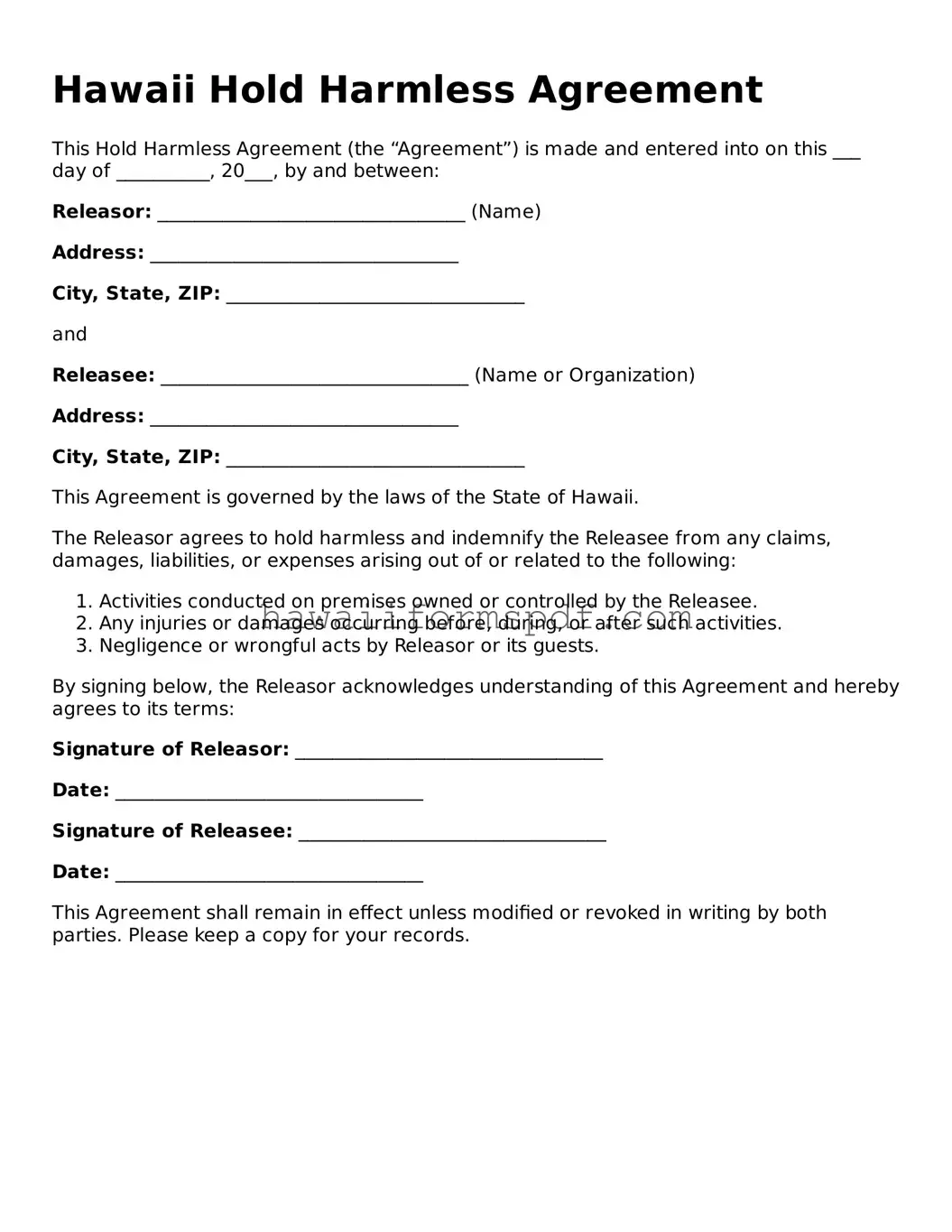Hawaii Hold Harmless Agreement
This Hold Harmless Agreement (the “Agreement”) is made and entered into on this ___ day of __________, 20___, by and between:
Releasor: _________________________________ (Name)
Address: _________________________________
City, State, ZIP: ________________________________
and
Releasee: _________________________________ (Name or Organization)
Address: _________________________________
City, State, ZIP: ________________________________
This Agreement is governed by the laws of the State of Hawaii.
The Releasor agrees to hold harmless and indemnify the Releasee from any claims, damages, liabilities, or expenses arising out of or related to the following:
- Activities conducted on premises owned or controlled by the Releasee.
- Any injuries or damages occurring before, during, or after such activities.
- Negligence or wrongful acts by Releasor or its guests.
By signing below, the Releasor acknowledges understanding of this Agreement and hereby agrees to its terms:
Signature of Releasor: _________________________________
Date: _________________________________
Signature of Releasee: _________________________________
Date: _________________________________
This Agreement shall remain in effect unless modified or revoked in writing by both parties. Please keep a copy for your records.
